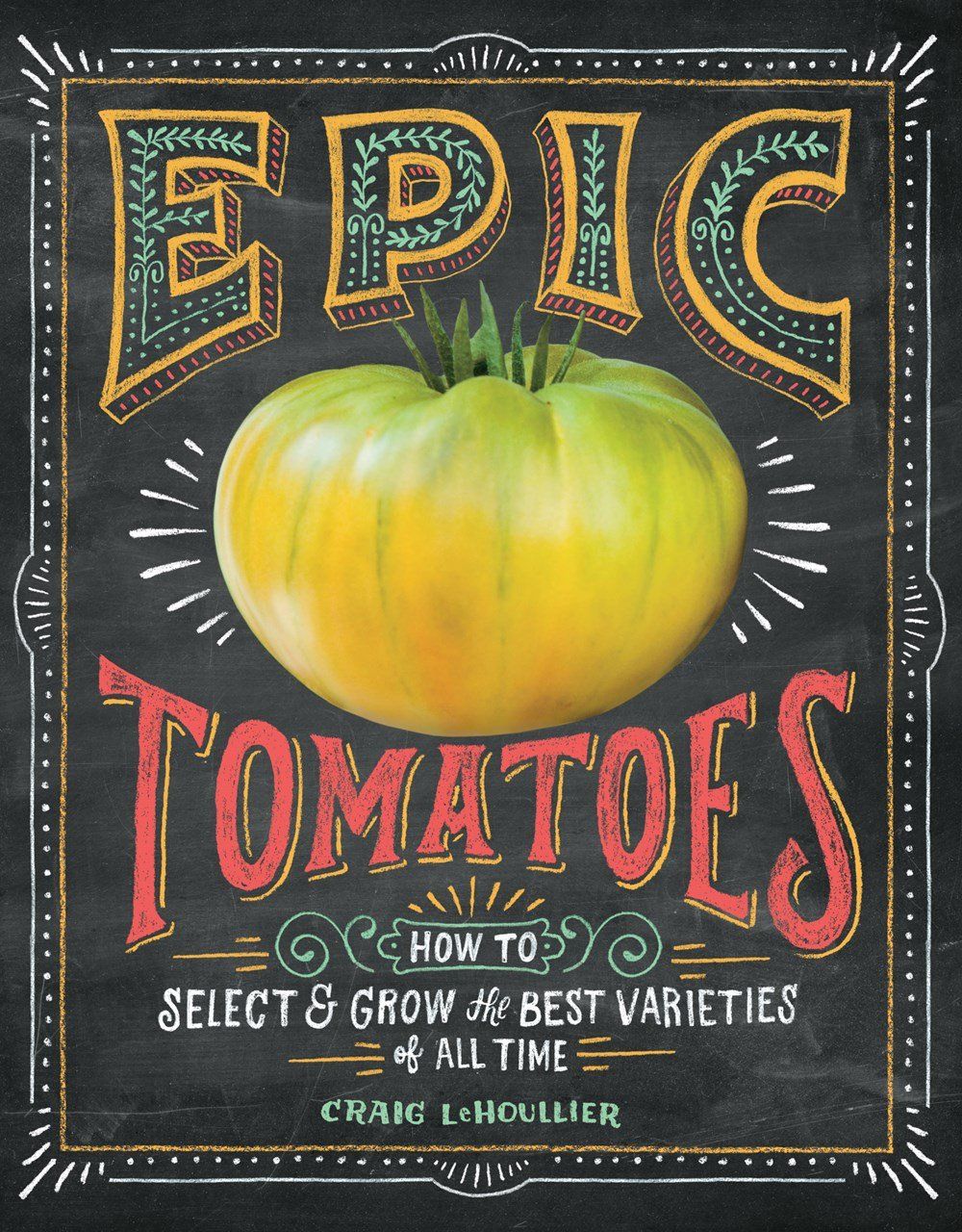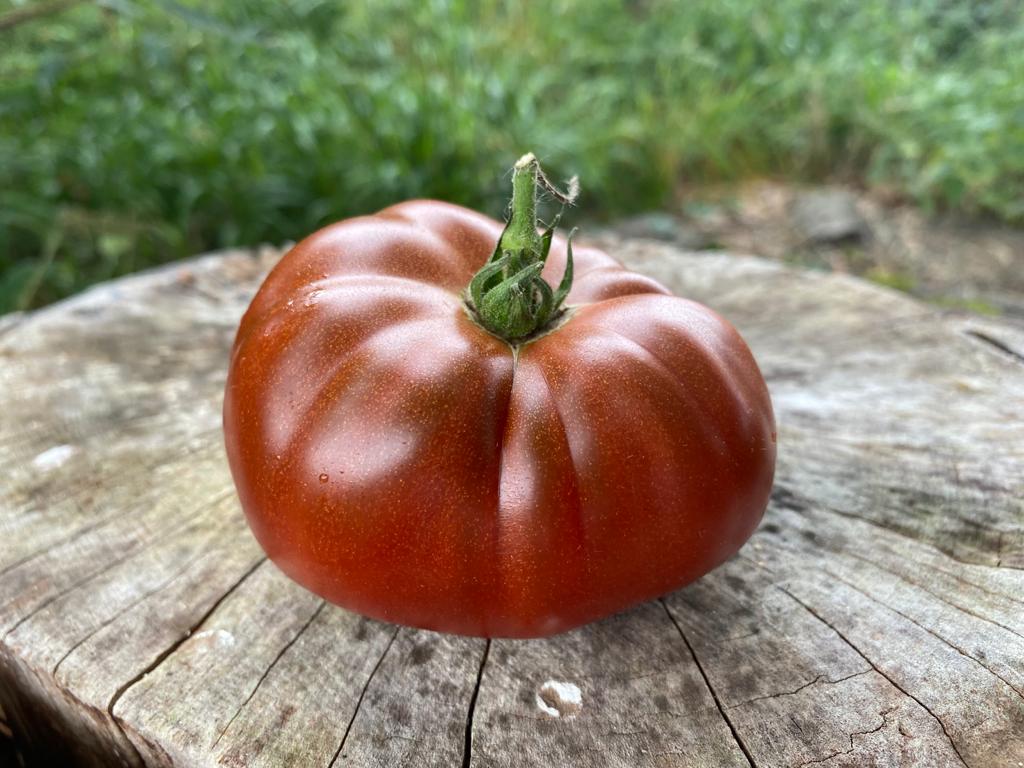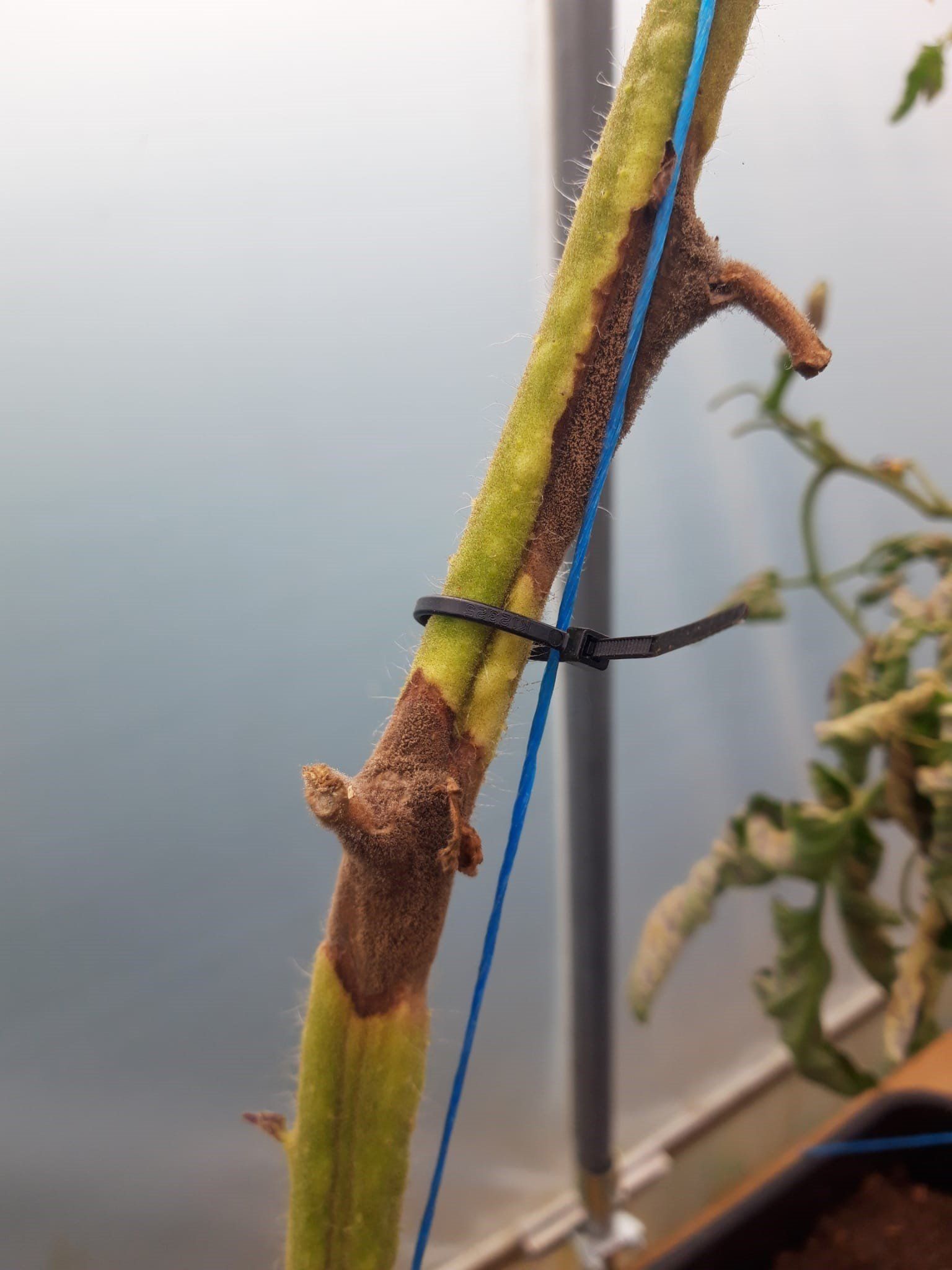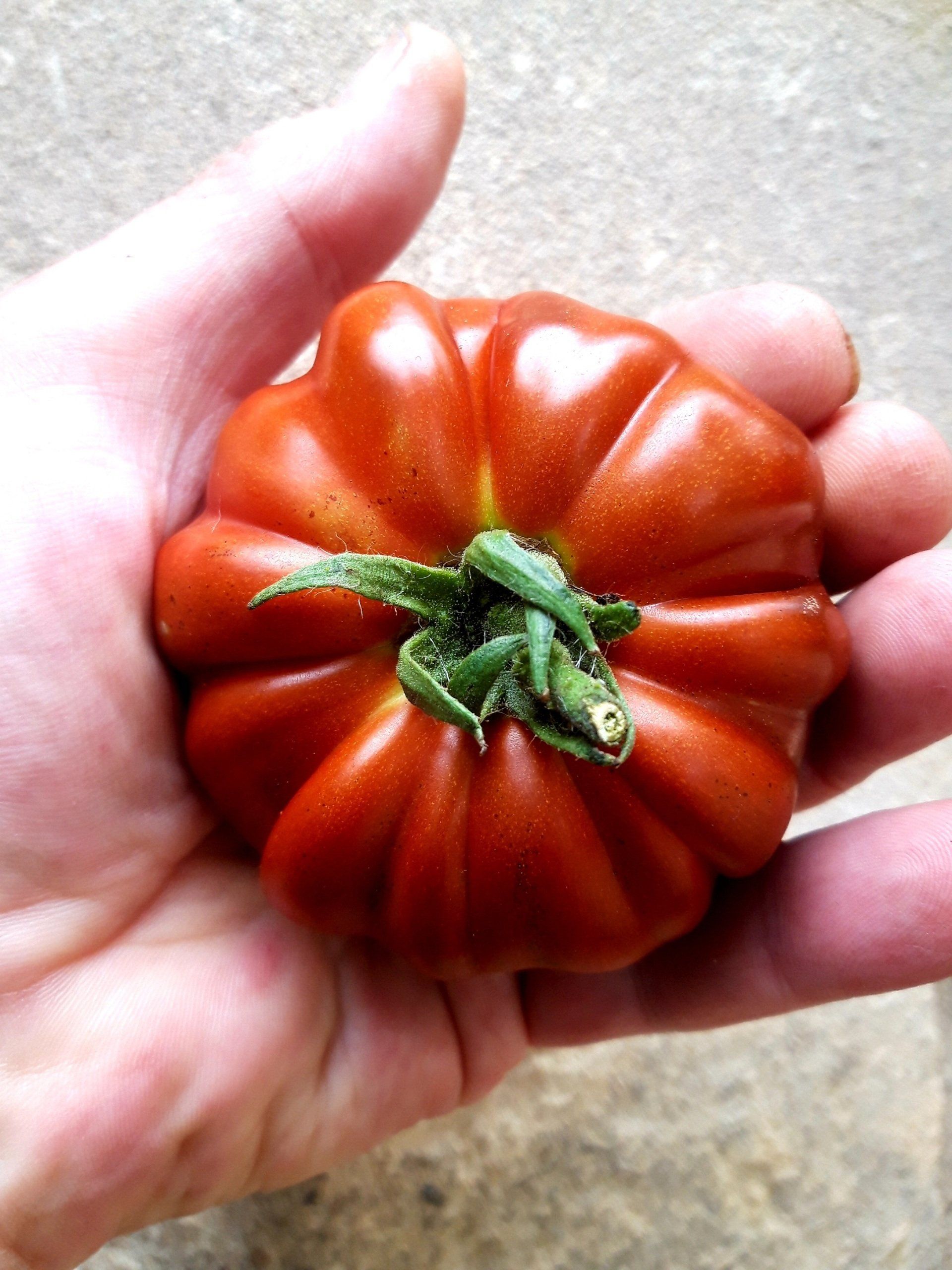
Who Is Craig LeHoullier? Craig is in my view one of the worlds leading authorities on the history and evolution of tomato growing. He is the author of game changing book EPIC TOMATOES. Craig is a retired chemist living in North Carolina with an obsession for tomatoes. Craig grew up in Rhode Island where his father and grandfather were keen vegetable gardeners. It was 1981 when Craig with his wife Sue got their own garden this was when the gardening bug went into overdrive. Since 1981 Craig has had gardens in Pennsylvania, New England, Seattle, and North Carolina all with varied conditions to tackle. By the mid eighties Craig was researching the history of tomatoes and exploring the USDA seed bank and seed savers exchange. It is here he began to revive many lost and forgotten heirloom tomato varieties. Many of these varieties had fallen out of favour simply because they were not commercially viable. These were lower yielding and had less disease resistance to the commercial hybrids favoured by commercial growers but often at the expense of flavour. Craig has revived a number of historic Heirloom varieties including MAGNUS, FERRIS WHEEL, and PEAK OF PERFECTION, these are now showing in some seed catalogues again. In 1990 Craig was sent some seed by Mr John D Green from Tennessee. Mr Green explained in his accompanying letter that the seeds were given to him by a neighbour. The neighbour’s family had grown this variety for generations since it was given to them by Cherokee Indians. CHEROKEE PURPLE was born! Craig named the variety and listed it in the Southern exposure seed exchange yearbook. Speaking with Jeff McCormack from SSE Jeff expressed concern about weather the public would accept an unusual tomato colour. CHEROKEE PURPLE is now a hugely popular tomato worldwide. CHEROKEE CHOCOLATE and CHEROKEE GREEN soon followed. These are thought to be mutations with the chocolate showing in Craig’s garden in 1995 and the green showing up the garden of Darrell Merrell of Oklahoma. These 2 additions have remained stable and are widely available. Some seed catalogues do show CHEROKEE ROSE, CHEROKEE GOLDEN, and CHEROKEE LIME STRIPES. These are all Cherokee crosses. Moving forward to 2006 Craig set up the Dwarf Tomato Project with Patrina Nuske Small. The project has released 135 varieties with many more in the pipeline. (See separate Dwarf tomato project blog post) These Dwarf varieties can be found is seed catalogues all over the world. Craig often points out that flavour is the key driver in creating the exciting new tomatoes. The purchase of Craig’s book EPIC TOMATOES was a tomato growing lightbulb moment for me personally. I had become frustrated with bland tasting tomatoes that promised so much. We all tend to purchase seed based on a pretty picture. I had been many Bi-coloured varieties and expecting them to taste as good as they look. Many of the varieties were mild and bland. Suddenly through Craig’s book I had access to those flavourful tomatoes I have craved. ROSELLA PURPLE, ULURU OCHRE, LILLIANS YELLOW HEIRLOOM, LUCKY CROSS, LITTLE LUCKY and PINK BERKELEY TIE DYE opened up a new world in my tomato growing. Today Craig is targeting more of a normal retirement and especially enjoys hiking with his wife Sue and their 3 dogs in the rural parts of North Carolina. In 2021 he set up a wonderful online tomato growing course with Joe Lamp’l who is the USA version of Monty Don. https://organicgardeningacademy.com/p/growing-epic-tomatoes h Craig’s Instagram account has an excellent diary of videos with detail of varieties and growing techniques. @nctomatoman Craig has written an extensive collection of blog posts, these can be found on his website www.craiglehoullier.com EPIC TOMATOES by Craig LeHoullier is available with good booksellers worldwide and available on the Tomato Revolution website. www.tomatorevolution.co.uk Craig is a mentor, friend, teacher, inspiration, and all round good guy. He has given so much to tomato growers worldwide through his wisdom and insight. Thanks Craig!

The Dwarf Tomato Project was cofounded by Craig LeHoullier from Hendersonville, North Carolina, USA and Patrina Nuske Small from Bemboka, New South Wales, Australia in 2005 It all began with a comment made by Craig on a tomato forum at Gardenweb. He had noticed that the Dwarf category was basically limited to one variety. This variety is called New Big Dwarf and first appeared in the 1915 Isbell Catalogue and was developed by crossing Dwarf Champion late in the 1800s. New Big Dwarf as a variety was largely forgotten because the flavour was bland. Craig, Patrina and a group of volunteers set about crossing New Big Dwarf with various flavour focused heirloom varieties. Stabilizing a new variety can take anything up to 8 years but Craig and Patrina had the advantage of 2 growing seasons each year. Craig in the Northern Hemisphere and Patrina in the Southern Hemisphere was an opportunity to speed up the stabilization process with each project tomato. So why develop Dwarf varieties? The growth habit of between 3ft and 6ft high is unlike tall growing indeterminates so Dwarfs can be more easily grown in pots on a balcony with less need for tall staking. Manageable tomato plants which can often show 2 or 3 main fruiting stems and potential for a similar yield to that of an indeterminate plant. When Dwarf varieties are crossed with indeterminates the F1 offspring will show do dwarf plants as the Dwarf gene is recessive. The F2 however should produce 25% seedlings with dwarf growth habit. This is where the fun begins. Best practice is to grow out a number of F2 seedlings and choose the tomato characteristics you want from any given plant. Stability can show as early as F5 but it can vary greatly with some lines being stubborn with fruit consistency. At the time of writing this blog 135 Dwarf varieties have been officially released. They come in all shapes and sizes exactly like indeterminates so there is a dwarf variety for everyone be it a large purple beefsteak or a pink cherry variety. Early ripening from 65 days up to late season 90 days, potato leaf, regular leaf, variegated leaves, and 3ft up to 6ft tall. The Dwarf variety breeders have thoughtfully created new varieties with flavour being the key driver. Dwarf varieties are becoming available with seed companies worldwide and proving to be a popular addition to tomato growing options. Victory Seeds in USA are the only company that stock all 135 varieties. At Tomato Revolution we currently stock 25 Dwarf varieties and plans are afoot to double this over the coming seasons. The Dwarf Tomato Project continues to expand and it will be fascinating to follow its progress and new additions.

BLIGHT INSIGHT PART 2 This blog post is based on my tomato growing experiences of 20 years. The information below is a personal viewpoint. Part 2 covers growing practices that can could impact blight. PRUNING TOMATO PLANTS Why do we prune tomatoes? The common thought amongst growers is that pruning improves ventilation and in turn reduces diseases. In my experience this practice does not reduce the risk of blight, except pruning up to the first tomato truss. The reason for this is that when watering lower leaves can get splashed. Blight spores need water to thrive. In my experience blight can attack open cut wounds far more easily, especially cuts from heavy pruning. (See above picture of blight on pruning wounds) Over pruning carries little benefit and can increase risk of disease. When we do prune tomatoes, we only choose a time when there are a few dry days ahead. We avoid pruning when conditions are humid or wet. After a pruning session we always mist the wounds with a diluted liquid seaweed solution. This acts as a medicine and speeds up the healing of the wound. Outdoor tomatoes need limited pruning on the lower leaves only. Lower leaves can often turn yellow, this is not blight but a magnesium deficiency in the growing material or an unbalanced tomato feed. Be assured hard pruned tomato plants offer easier access for blight to take hold. VENTILATION Ventilation is essential to reduce mould on tomatoes. Grey blotches can often show on tomato leaves where ventilation is limited. Lack of ventilation can encourage blight to take hold in a greenhouse or tunnel but initially it is the ventilation that brought blight into the indoor growing space. Very much chicken and egg. Blight spores can travel up to 30 miles in wet, warm, and windy conditions, it is an air borne fungus. Late June to late July is when blight can be at its worst. In early July 2021 the UK weather was wet and windy offering a perfect opportunity for blight to spread rapidly. It was the wind that drove blight into well ventilated greenhouses and tunnels in 2021. Some indoor growers were not affected, and this is probably due to the direction of the wind in relation to their greenhouse vents. I would consider reducing ventilation on a given wet and windy day in July even if was for a couple of hours. This would require close attention and management. It could be the difference between being ravaged by or escaping blight. A helpful blight website www.blightwatch.co.uk offers blight warnings in the UK. WATERING Some growers suggest that reduced watering reduces the chances of blight spreading. Splashing when watering or watering the foliage can spread blight. Reducing watering has no benefit in reducing blight and will only increase blossom end rot. LOCATION Basic growing practices will help reduce the spread of blight. If you are to grow potatoes on a plot look to use blight resistant varieties like SARPO MIRA, GATSBY, and VITABELLA. Potatoes grown close to outdoor tomatoes will increase risk of blight. Outdoor tomatoes grown close to a tunnel or greenhouse could increase the risk of indoor tomatoes getting blight. Allotment growers face the obvious challenges from neighbouring plots but increased communication with plot holders discussing growing plans could reduce outbreaks of blight. Blight tends to attack the fruit last on the plant, this will show again with blackened areas and some wrinkling of the fruit. Tomatoes are perfectly edible on blight affected plants. Seeds from blighted plants do not carry blight when saved.

